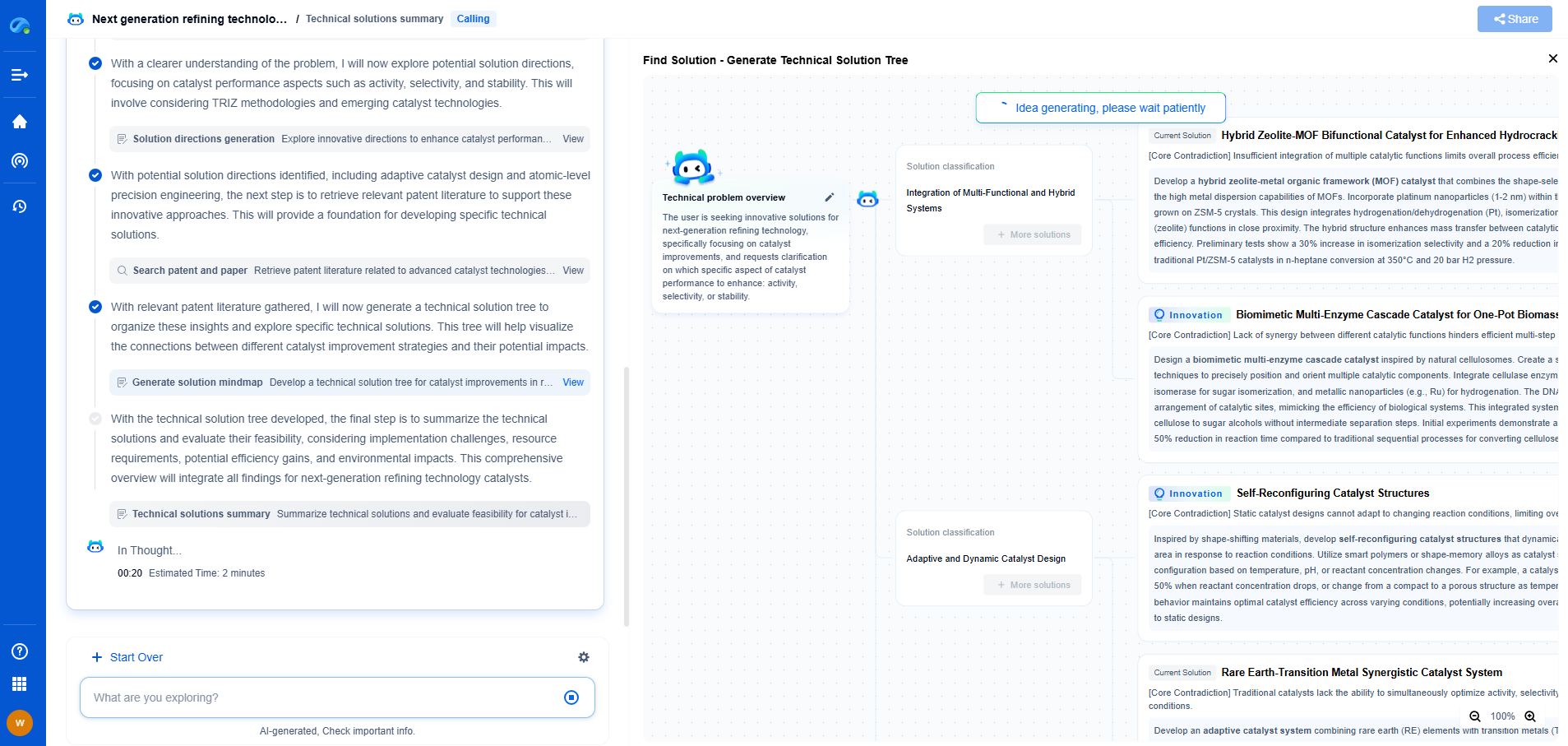What Is Modulation in Wireless Communication?
JUN 27, 2025 |
Wireless communication is a cornerstone of modern technology, enabling everything from mobile telephony to satellite transmissions. At the heart of all these technologies lies the concept of modulation. But what exactly is modulation, and why is it so crucial for wireless communication?
What is Modulation?
Modulation refers to the process of varying a carrier signal's properties, such as amplitude, frequency, or phase, to transmit data. Essentially, it involves imposing the information that one wishes to send onto a carrier wave, which can then propagate over the airwaves to a receiver. Modulation is essential because it allows us to transmit signals over long distances efficiently while minimizing interference and signal degradation.
Types of Modulation
There are several types of modulation techniques used in wireless communication, each with its own advantages and applications. The three primary types are:
1. Amplitude Modulation (AM)
Amplitude Modulation involves varying the amplitude of the carrier signal in line with the data signal's amplitude. This technique is relatively simple and has been widely used in AM radio. However, it is more susceptible to noise and interference, making it less suitable for high-quality audio or data transmission.
2. Frequency Modulation (FM)
Frequency Modulation changes the frequency of the carrier wave according to the data signal. FM is known for its resilience to noise and interference, providing clearer reception than AM. This technique is extensively used in FM radio broadcasting and some television transmissions.
3. Phase Modulation (PM)
In Phase Modulation, the phase of the carrier wave is varied according to the data signal. PM is not commonly used on its own but forms the basis for more advanced modulation schemes like Quadrature Amplitude Modulation (QAM) and Phase Shift Keying (PSK), which are prevalent in modern digital communication systems.
Why is Modulation Necessary?
Modulation serves several essential functions in wireless communication:
- **Signal Transmission Over Distance**: Modulation allows signals to be transmitted over long distances without significant loss of quality. Low-frequency signals, like audio, cannot travel far by themselves. By modulating these signals onto a high-frequency carrier, they can be transmitted efficiently over vast distances.
- **Bandwidth Utilization**: Allocating different frequencies for different transmissions prevents overlap and interference. Modulation helps in efficiently utilizing the available bandwidth, allowing multiple signals to be transmitted simultaneously over a single channel.
- **Noise and Interference Reduction**: Modulation techniques can enhance the signal-to-noise ratio, making it easier to distinguish the transmitted signal from background noise and interference. This is particularly important in environments with many competing signals, such as urban areas.
Digital Modulation Techniques
As technology has advanced, the need for more efficient and reliable communication has led to the development of digital modulation techniques. These techniques encode data into binary format before modulating the carrier signal. Common digital modulation schemes include:
- **Quadrature Amplitude Modulation (QAM)**: QAM combines amplitude and phase modulation, allowing for higher data rates. It is widely used in cable modems and digital television.
- **Phase Shift Keying (PSK)**: PSK changes the phase of the carrier signal in discrete steps. Variants like Binary Phase Shift Keying (BPSK) and Quadrature Phase Shift Keying (QPSK) are used in various digital communication systems, including satellite communications.
- **Frequency Shift Keying (FSK)**: FSK uses different frequencies to represent different data values. It is often used in low-bandwidth applications, such as radio frequency identification (RFID) systems.
The Future of Modulation
With the ever-growing demand for faster and more reliable wireless communication, modulation techniques continue to evolve. Emerging technologies like 5G and the Internet of Things (IoT) are driving the development of more sophisticated modulation schemes that can handle higher data rates and more users simultaneously. Researchers are exploring advanced techniques like Orthogonal Frequency-Division Multiplexing (OFDM) and Massive MIMO systems to meet these challenges.
In conclusion, modulation is a fundamental aspect of wireless communication that enables the efficient and reliable transmission of data over the airwaves. By varying the properties of carrier signals, modulation allows us to send information across vast distances, utilize bandwidth effectively, and reduce the effects of noise and interference. As technology advances, so too will the methods and techniques of modulation, paving the way for even more innovative and robust communication solutions.
Unlock Next-Gen Innovation in Communication Technology with Patsnap Eureka
The field of communication technology is evolving at breakneck speed—from 5G and satellite systems to next-gen wireless protocols and quantum communications. Staying ahead demands more than just information—it requires strategic insights, real-time patent intelligence, and a deep understanding of technological trajectories.
Patsnap Eureka, our intelligent AI assistant built for R&D professionals in high-tech sectors, empowers you with real-time expert-level analysis, technology roadmap exploration, and strategic mapping of core patents—all within a seamless, user-friendly interface. Whether you're optimizing signal processing designs, navigating 3GPP standards, or exploring IP strategies for IoT and 6G networks, Eureka helps you move faster, think deeper, and innovate smarter.
Try Patsnap Eureka today—and see how it can transform the way you work across the entire communication technology innovation lifecycle.
- R&D
- Intellectual Property
- Life Sciences
- Materials
- Tech Scout
- Unparalleled Data Quality
- Higher Quality Content
- 60% Fewer Hallucinations
Browse by: Latest US Patents, China's latest patents, Technical Efficacy Thesaurus, Application Domain, Technology Topic, Popular Technical Reports.
© 2025 PatSnap. All rights reserved.Legal|Privacy policy|Modern Slavery Act Transparency Statement|Sitemap|About US| Contact US: help@patsnap.com

